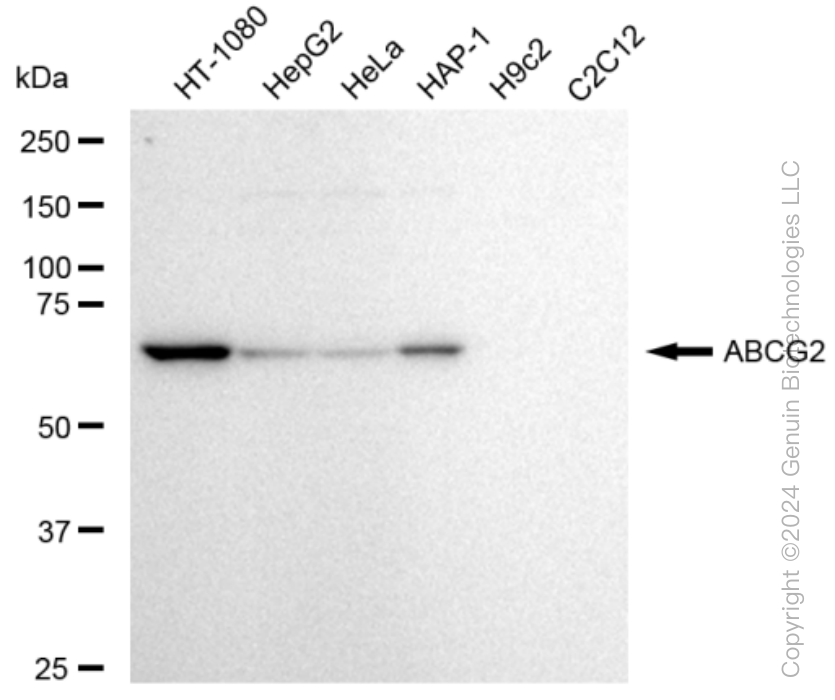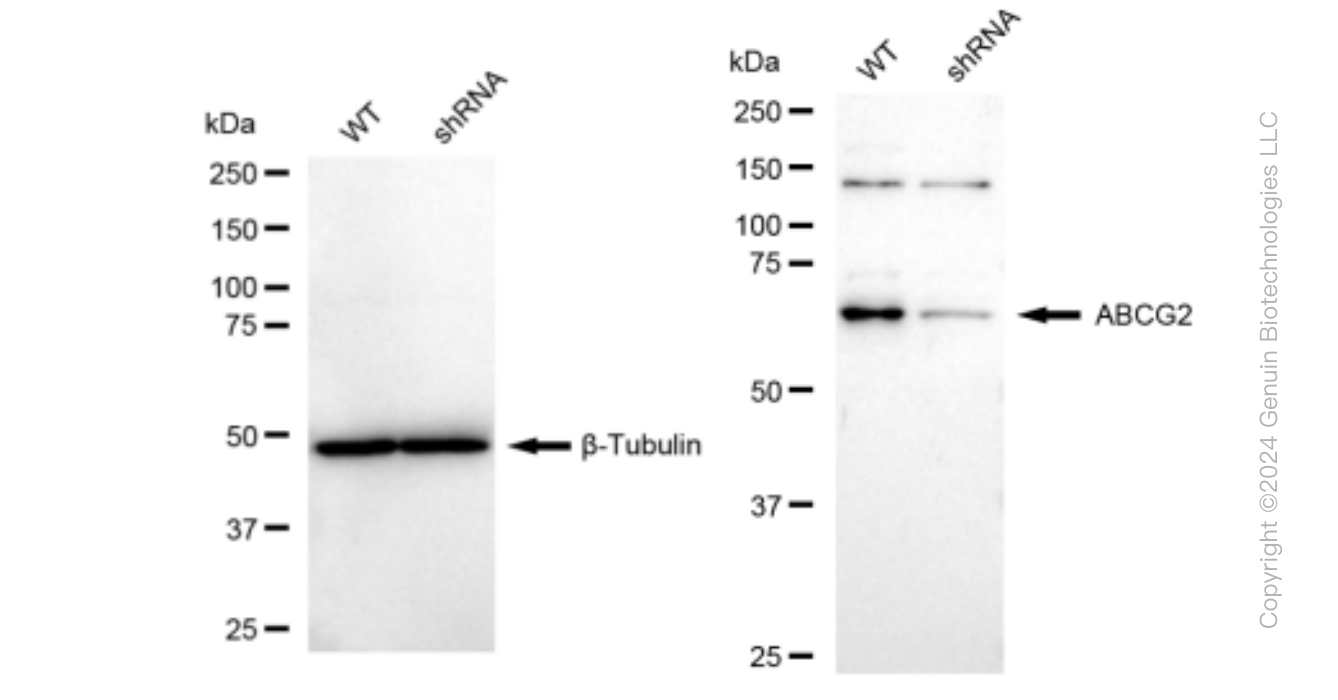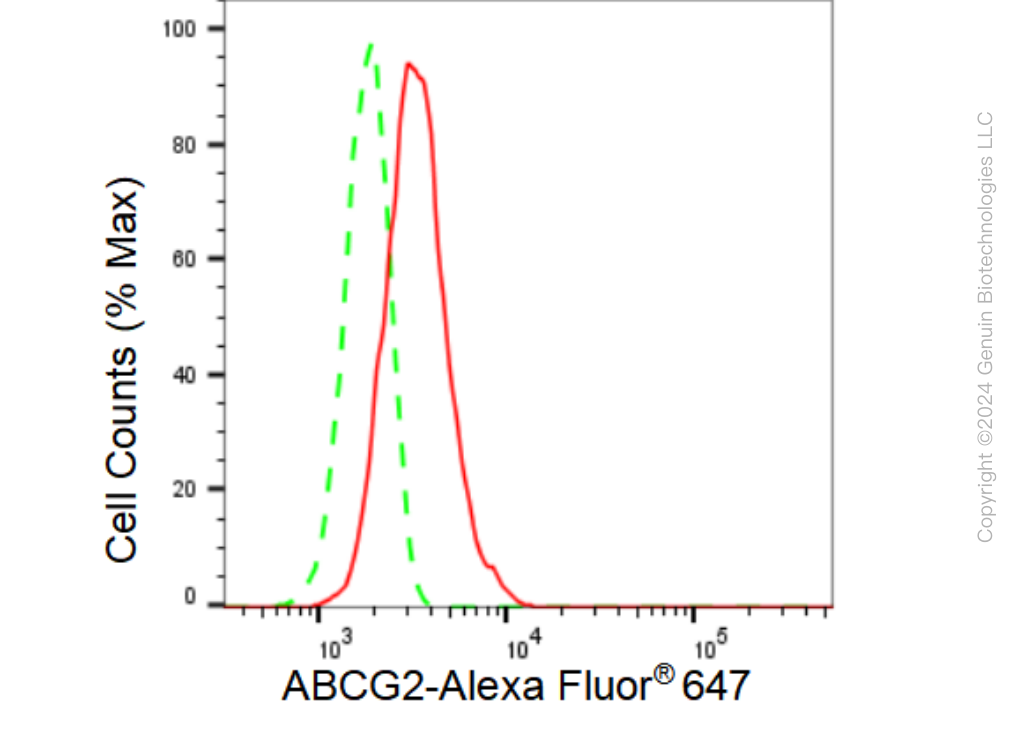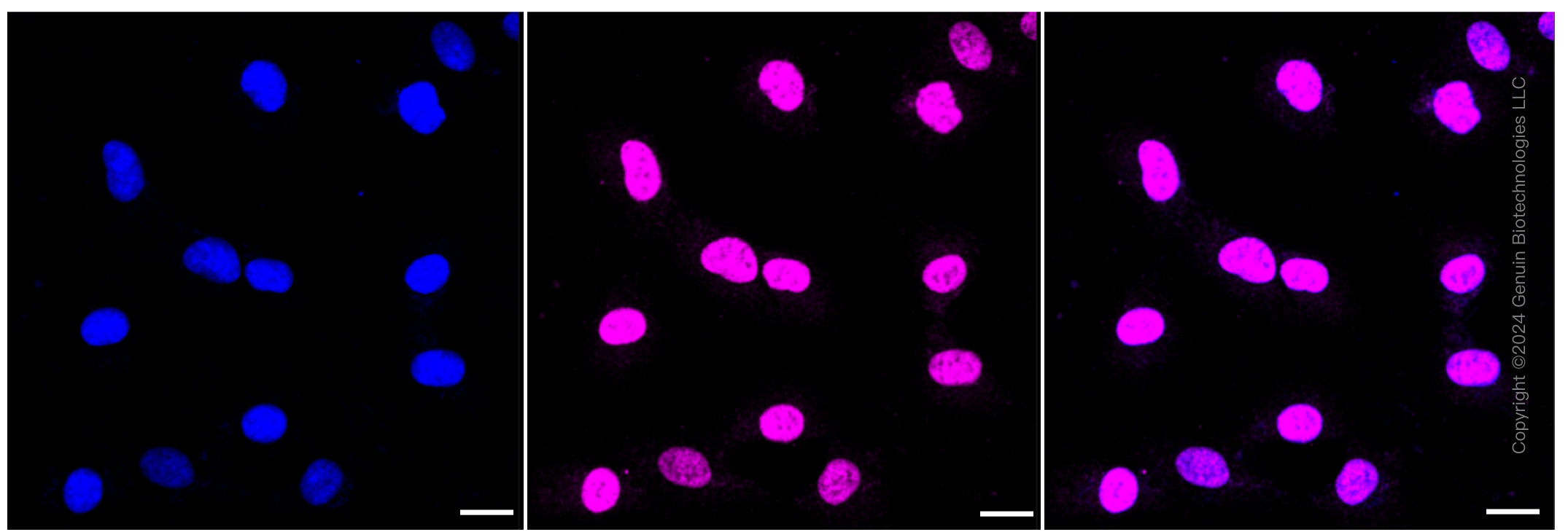KD-Validated Anti-ABCG2 Rabbit Monoclonal Antibody
Rabbit monoclonal antibody
- SPECIFICATION
- CITATIONS
- PROTOCOLS
- BACKGROUND

Application
| WB, FC, ICC |
|---|---|
| Primary Accession | Q9UNQ0 |
| Reactivity | Human |
| Clonality | Monoclonal |
| Isotype | Rabbit IgG |
| Clone Names | 23GB3130 |
| Calculated MW | Predicted, 72 kDa , observed, 72 kDa |
| Gene Name | ABCG2 |
| Aliases | ABCG2; ATP Binding Cassette Subfamily G Member 2 (Junior Blood Group); BCRP; ABCP; MXR; EST157481; CD338; ATP-Binding Cassette, Sub-Family G (WHITE), Member 2 (Junior Blood Group); Broad Substrate Specificity ATP-Binding Cassette Transporter ABCG2; Placenta-Specific ATP-Binding Cassette Transporter; Mitoxantrone Resistance-Associated Protein; Breast Cancer Resistance Protein; Urate Exporter; CDw338; BCRP1; Broad Substrate Specificity ATP-Binding Cassette Transporter ABCG2 Isoform 1 (Junior Blood Group); Multi Drug Resistance Efflux Transport ATP-Binding Cassette Sub-Family G (WHITE) Member 2; ATP-Binding Cassette, Sub-Family G (WHITE), Member 2; ATP-Binding Cassette Sub-Family G Member02; ATPbinding Cassette Transporter ABCG2; ATP-Binding Cassette Transporter G2; Placenta Specific MDR Protein 2; ABC Transporter; CD338 Antigen; EC 7.6.2.2; CDw38; UAQTL1; ABC15; GOUT1; MXR-1; BMDP; MXR1; MRX |
| Immunogen | A synthesized peptide derived from human ABCG2 |
| Gene ID | 9429 |
|---|---|
| Other Names | Broad substrate specificity ATP-binding cassette transporter ABCG2, 7.6.2.2, ATP-binding cassette sub-family G member 2, Breast cancer resistance protein, CDw338, Mitoxantrone resistance-associated protein, Placenta-specific ATP-binding cassette transporter, Urate exporter, CD338, ABCG2, ABCP, BCRP, BCRP1, MXR |
| Name | ABCG2 |
|---|---|
| Synonyms | ABCP, BCRP, BCRP1, MXR |
| Function | Broad substrate specificity ATP-dependent transporter of the ATP-binding cassette (ABC) family that actively extrudes a wide variety of physiological compounds, dietary toxins and xenobiotics from cells (PubMed:11306452, PubMed:12958161, PubMed:19506252, PubMed:20705604, PubMed:28554189, PubMed:30405239, PubMed:31003562). Involved in porphyrin homeostasis, mediating the export of protoporphyrin IX (PPIX) from both mitochondria to cytosol and cytosol to extracellular space, it also functions in the cellular export of heme (PubMed:20705604, PubMed:23189181). Also mediates the efflux of sphingosine-1-P from cells (PubMed:20110355). Acts as a urate exporter functioning in both renal and extrarenal urate excretion (PubMed:19506252, PubMed:20368174, PubMed:22132962, PubMed:31003562, PubMed:36749388). In kidney, it also functions as a physiological exporter of the uremic toxin indoxyl sulfate (By similarity). Also involved in the excretion of steroids like estrone 3-sulfate/E1S, 3beta-sulfooxy-androst-5-en-17-one/DHEAS, and other sulfate conjugates (PubMed:12682043, PubMed:28554189, PubMed:30405239). Mediates the secretion of the riboflavin and biotin vitamins into milk (By similarity). Extrudes pheophorbide a, a phototoxic porphyrin catabolite of chlorophyll, reducing its bioavailability (By similarity). Plays an important role in the exclusion of xenobiotics from the brain (Probable). It confers to cells a resistance to multiple drugs and other xenobiotics including mitoxantrone, pheophorbide, camptothecin, methotrexate, azidothymidine, and the anthracyclines daunorubicin and doxorubicin, through the control of their efflux (PubMed:11306452, PubMed:12477054, PubMed:15670731, PubMed:18056989, PubMed:31254042). In placenta, it limits the penetration of drugs from the maternal plasma into the fetus (By similarity). May play a role in early stem cell self-renewal by blocking differentiation (By similarity). In inflammatory macrophages, exports itaconate from the cytosol to the extracellular compartment and limits the activation of TFEB-dependent lysosome biogenesis involved in antibacterial innate immune response. |
| Cellular Location | Cell membrane; Multi-pass membrane protein. Apical cell membrane; Multi-pass membrane protein. Mitochondrion membrane; Multi-pass membrane protein. Note=Enriched in membrane lipid rafts |
| Tissue Location | Highly expressed in placenta (PubMed:9850061). Low expression in small intestine, liver and colon (PubMed:9861027) Expressed in brain (at protein level) (PubMed:12958161) |

Thousands of laboratories across the world have published research that depended on the performance of antibodies from Abcepta to advance their research. Check out links to articles that cite our products in major peer-reviewed journals, organized by research category.
info@abcepta.com, and receive a free "I Love Antibodies" mug.
Provided below are standard protocols that you may find useful for product applications.
If you have used an Abcepta product and would like to share how it has performed, please click on the "Submit Review" button and provide the requested information. Our staff will examine and post your review and contact you if needed.
If you have any additional inquiries please email technical services at tech@abcepta.com.













 Foundational characteristics of cancer include proliferation, angiogenesis, migration, evasion of apoptosis, and cellular immortality. Find key markers for these cellular processes and antibodies to detect them.
Foundational characteristics of cancer include proliferation, angiogenesis, migration, evasion of apoptosis, and cellular immortality. Find key markers for these cellular processes and antibodies to detect them. The SUMOplot™ Analysis Program predicts and scores sumoylation sites in your protein. SUMOylation is a post-translational modification involved in various cellular processes, such as nuclear-cytosolic transport, transcriptional regulation, apoptosis, protein stability, response to stress, and progression through the cell cycle.
The SUMOplot™ Analysis Program predicts and scores sumoylation sites in your protein. SUMOylation is a post-translational modification involved in various cellular processes, such as nuclear-cytosolic transport, transcriptional regulation, apoptosis, protein stability, response to stress, and progression through the cell cycle. The Autophagy Receptor Motif Plotter predicts and scores autophagy receptor binding sites in your protein. Identifying proteins connected to this pathway is critical to understanding the role of autophagy in physiological as well as pathological processes such as development, differentiation, neurodegenerative diseases, stress, infection, and cancer.
The Autophagy Receptor Motif Plotter predicts and scores autophagy receptor binding sites in your protein. Identifying proteins connected to this pathway is critical to understanding the role of autophagy in physiological as well as pathological processes such as development, differentiation, neurodegenerative diseases, stress, infection, and cancer.





